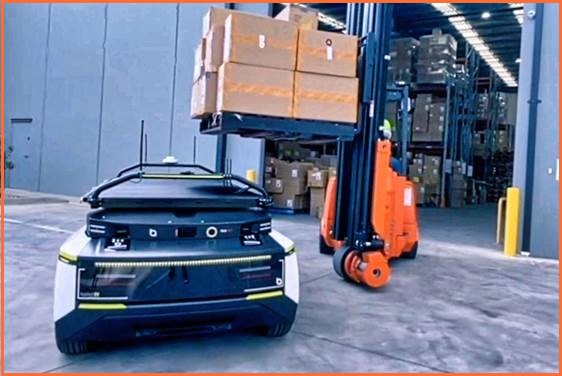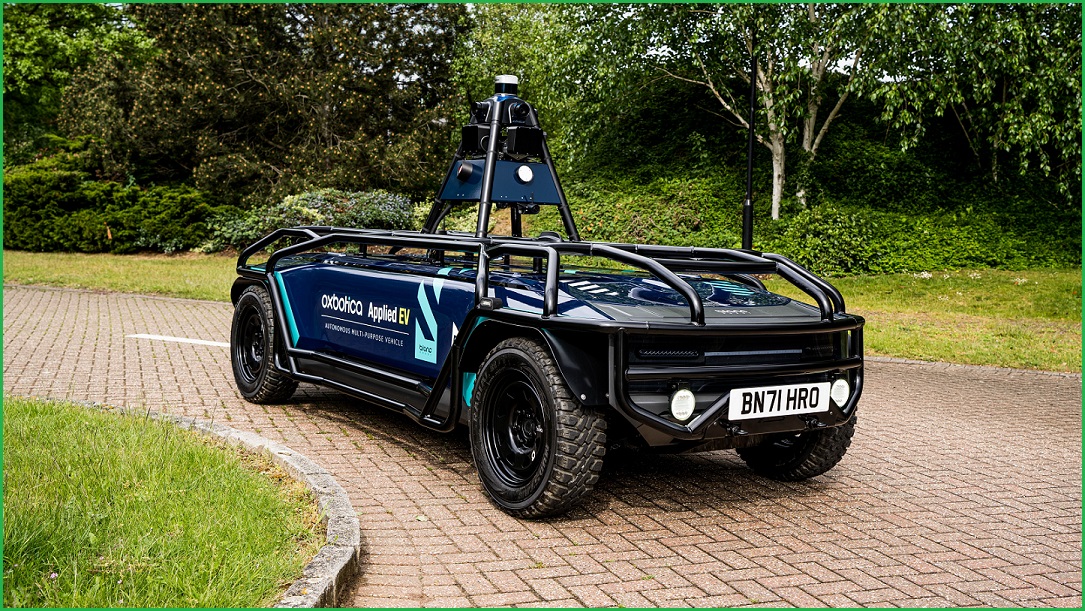As electric car makers like Tesla have learned, with often disastrous results, one of the biggest challenges of building autonomous electric vehicles (AEVs) is accommodating and protecting a human driver.
But what if you took the human out of the equation?
Melbourne electric-vehicles specialist Applied EV has done just that – and judging by strong overseas response to the results, the newly released Blanc Robot is poised to revolutionise autonomous movement of goods in a broad range of applications.
Designed with the smarts of a self-driving autonomous vehicle – but without the steering wheel, airbags, dashboards, driver alert systems, and other people-focused trimmings – the Blanc Robot can carry up to a tonne of cargo anywhere it’s instructed to go.
“Most companies have taken a traditional vehicle with a driver in it, then put autonomy on top of that,” Applied EV founder and CEO Julian Broadbent told Information Age, “but we came from it saying, ‘let’s build a software-defined vehicle from the start, with no driver’.”
“You immediately get a sense of how different the solution needs to be when you have no driver at all,” he continued.
“When you remove the cabin and have a vehicle capable of carrying 1,000kg sitting in front of you, the only way it moves is with software – and we have to make it safety rated from the very start because you don’t have the backup of a driver.”

The vehicles are ideal for moving cargo around private commercial property. Photo: supplied
An autonomous-vehicle operating system
Well aware of the need for rock-solid safety in its autonomous vehicle platform, Applied EV spent two years testing and refining its BackBone operating system to the point where the Blanc Robot is ready for safe real-world deployment – and quickly found an eager adopter on the other side of the world.
UK firm Oxbotica, an eight-year-old Oxford University software spinoff that helps industrial firms build autonomous solutions, discovered the Blanc Robot after a global search for a vehicle capable of moving goods around defined environments such as shipping ports, solar farms, industrial complexes, airports, or mining sites.
“They’re all looking into automation in different ways, but it’s all the same problem,” Oxbotica founder and director of the Oxford Robotics Institute Paul Newman explained, likening the company’s autonomous software platform to a cloud-computing architecture or desktop operating system that provides a common base for all manner of applications.
Oxbotica’s platform provides APIs that allow business applications to interact with fleets of autonomous vehicles – reporting their status, dispatching them to a particular location, or interacting with humans that might need to enter a PIN to open a cargo hold and remove their grocery delivery.
“We have lots of businesses that want autonomy,” he said, “and we’ll be able to provide our software and Applied EV’s hardware as full white-label autonomy solutions for them to go innovate.”
“What they want to carry, when and where – that’s their business. But we provide a way for that to be leveraged to work with different vehicles using common software.”
Facing the safety challenge
Although they may not carry or be controlled by humans, industrial autonomous vehicles will operate in spaces where humans are – and that has made safety critical.
Safety has proven particularly challenging for conventional electric car makers, which have struggled to balance the capabilities of autonomous vehicles with the need to engage drivers to help them avoid unpredictable situations like head-on collisions.
Tesla, in particular, has made the headlines for the wrong reasons after its self-driving features were blamed in a number of fatal accidents and collisions with emergency vehicles.
That company was ultimately forced to recall nearly 12,000 vehicles after discovering a flaw in its Full Self-Driving feature – a setback for an exploding electric-vehicle market where autonomous driving is inching ever closer to reality.
“The reason we’re not seeing [full autonomy] on the road yet is because vehicles are still kind of analogue and autonomy is still kind of digital,” Broadbent said, “and it hasn’t quite gotten to perfect software plus hardware yet.”
AI-based techniques are helping robotics engineers continuously improve safety, Newman said, noting that a key design consideration was ensuring autonomous systems don’t get stuck trying to accomplish tasks the same way all the time.
“Safety comes from architecture,” he explained. “You shouldn’t have one way to solve problems, but the autonomy system should have three or four different ways to solve autonomy by looking for consensus.”
“You build in different perspectives and different ways of solving the problem using different mathematics – and if they agree, you can be much more confident” in the safe operation of the vehicle.
Tapping Australia’s autonomous-vehicle expertise
For all the growing attention on robotaxis and other autonomous passenger vehicles, Newman said his global search found few comparable alternatives to the Blanc Robot and none that were ready for delivery.
That’s a testament to Australia’s long history in autonomous engineering, he said, that has refined technologies already deployed for the likes of autonomous mining vehicles, driverless cargo trains, and autonomous shipping container terminals.
“Australia has a really amazing heritage in starting a lot of the thinking around industrial autonomy,” Newman said, noting that much of his own expertise came from his early days as a student in Australia in the mid-1990s – where his work with University of Sydney robotics experts fostered an interest that became his life’s work.
Applied EV’s UK deal – which Saw automotive enthusiasts agog over the Blanc Robot at the recent Goodwood Festival of Speed – expands a growing list of opportunities that the company is already pursuing in the US and Asia.
“You start to unlock the true value of automation,” Broadbent said, “and can bring forward the commercialisation cycle because then we’re actually generating real economics.”
“If you’ve got a safety driver in an autonomous vehicle, you’re not commercial.”










